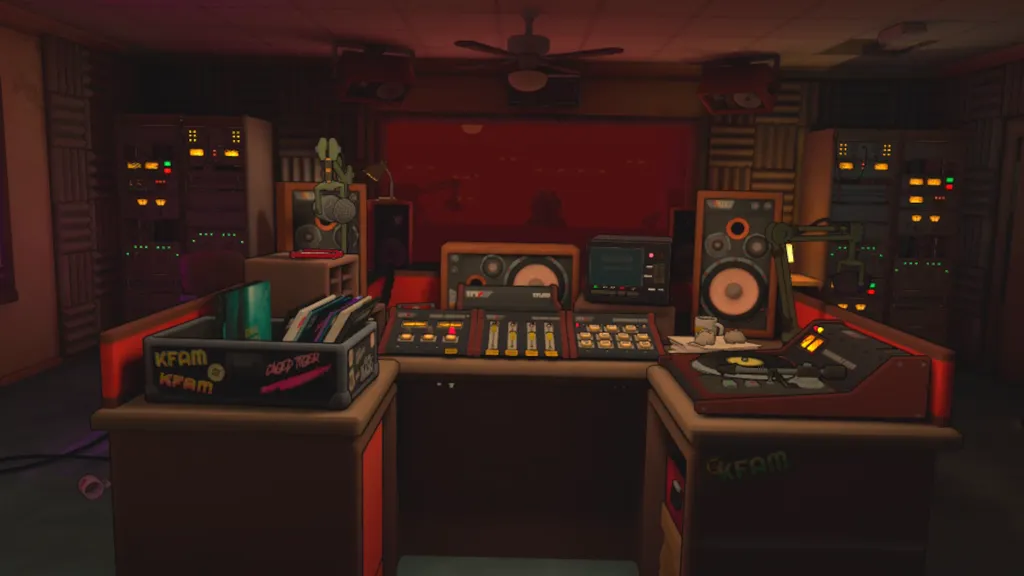In college, I worked a campus job.
Nine shifts out of ten, it was a breezy tech support job where unless I was walking a teacher through the steps of rebooting a computer or turning on a projector, I was writing or playing games for a clean $15/hour. On that rare tenth shift, however, I had to perform maintenance on empty classrooms in empty buildings during the summer. Haunted by dim — often flickering — fluorescent lights and unsettling silence, these shifts were oddly terrifying. Sudden, unplaceable noises and stumbling on massive cockroaches were normal occurrences, but they never stopped scaring the living daylights out of me.
Since then, I’ve wanted to experience something that captures the horror and dread-inducing aspects of that same mundane, quiet isolation. Killer Frequency scratches that itch with satisfying precision, even if those moments are only a piece of Team17’s charming horror-comedy puzzler.
It’s 1987 in Gallows Creek, USA. The pop is synthy, the metal is hairy and neon lights wash an otherwise Earth-toned small town in bold cyan and bubblegum hues. You’re sitting down for another night on the airwaves as has-been radio host Forrest Nash when an unexpected phone call from the police derails your entire evening. On the 30th anniversary of his supposed death, a serial killer (the aptly-named Whistling Man) is on the prowl in Gallows Creek once again. The town’s first responders are indisposed and the emergency line has been re-routed to the radio station’s phone number. Now it’s up to you and your producer Peggy to save the killer’s would-be victims from certain, painful deaths as you wait for help to arrive from the next town over.
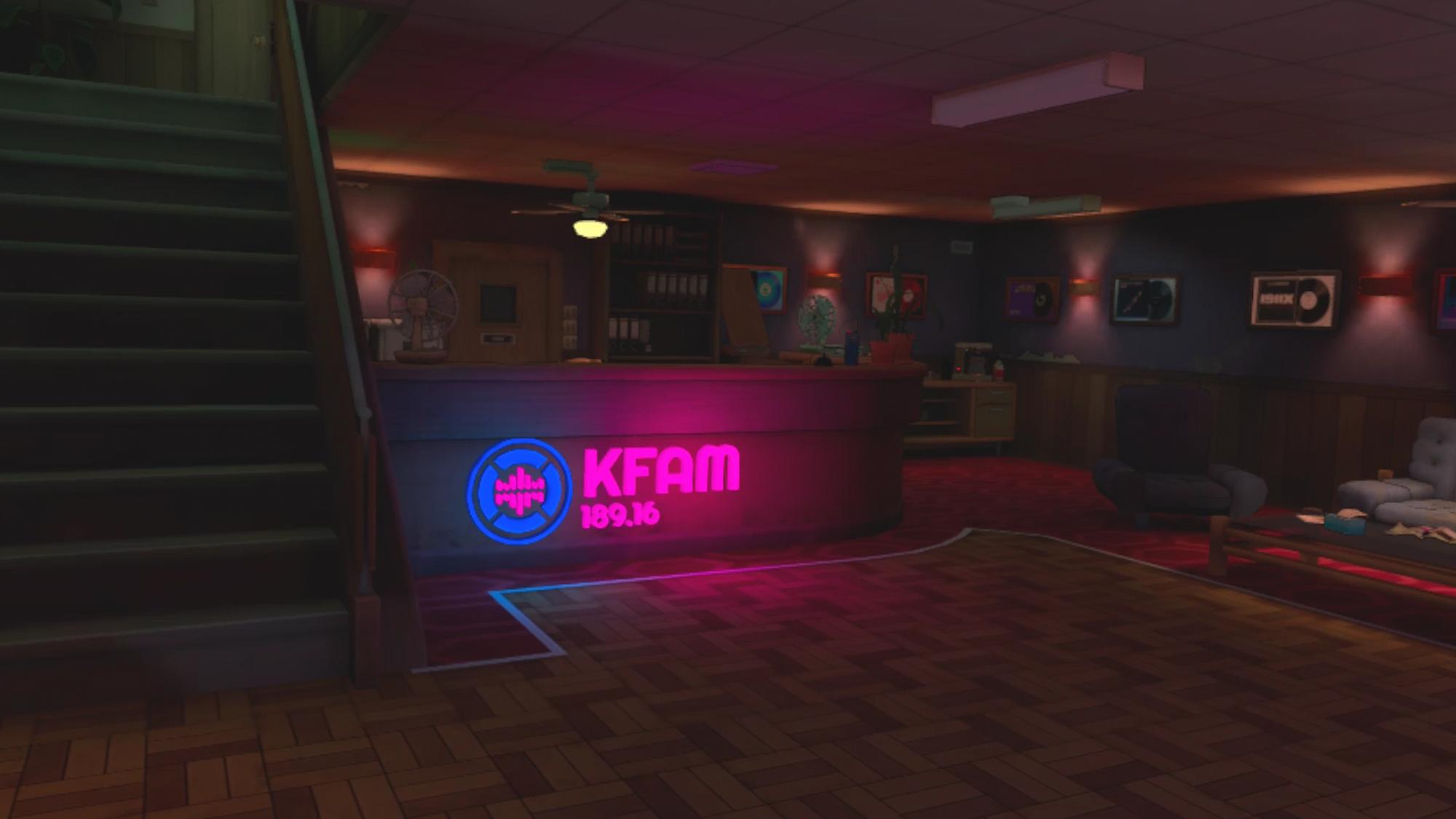
Killer Frequency does not mince words or waste time. In its first half-hour, you get a good grasp on the game’s stakes, characters and gameplay loop. Nash, the aforementioned protagonist, is a reluctant radio host whose days in the limelight pulling in millions of listeners at a popular Chicago radio station have passed. Wholly unfamiliar with Gallows Creek’s small-town culture and daily life, he’s a perfect player stand-in. His reserved, smug, borderline Fraizer Crane-like demeanor meshes well with that of his producer.
Serving as the game’s guiding hand and Nash’s companion from the producer’s booth, Peggy’s compassionate, upbeat presence provides a pleasant foil to Forrest’s grumpy — if charismatic — attitude. That character dynamic is crucial to Killer Frequency’s tonal and narrative success. Confronted with saving a number of stereotypical 1980s small town and horror movie characters, the two spend a good chunk of the game talking to each other – at least when jazzercise-obsessed runners or mischievous teens aren’t on the line. Their relationship carries the slower, more relaxed moments in-between the tense kills and thrills, evolving as the two work together to help callers thwart the murderous menace.
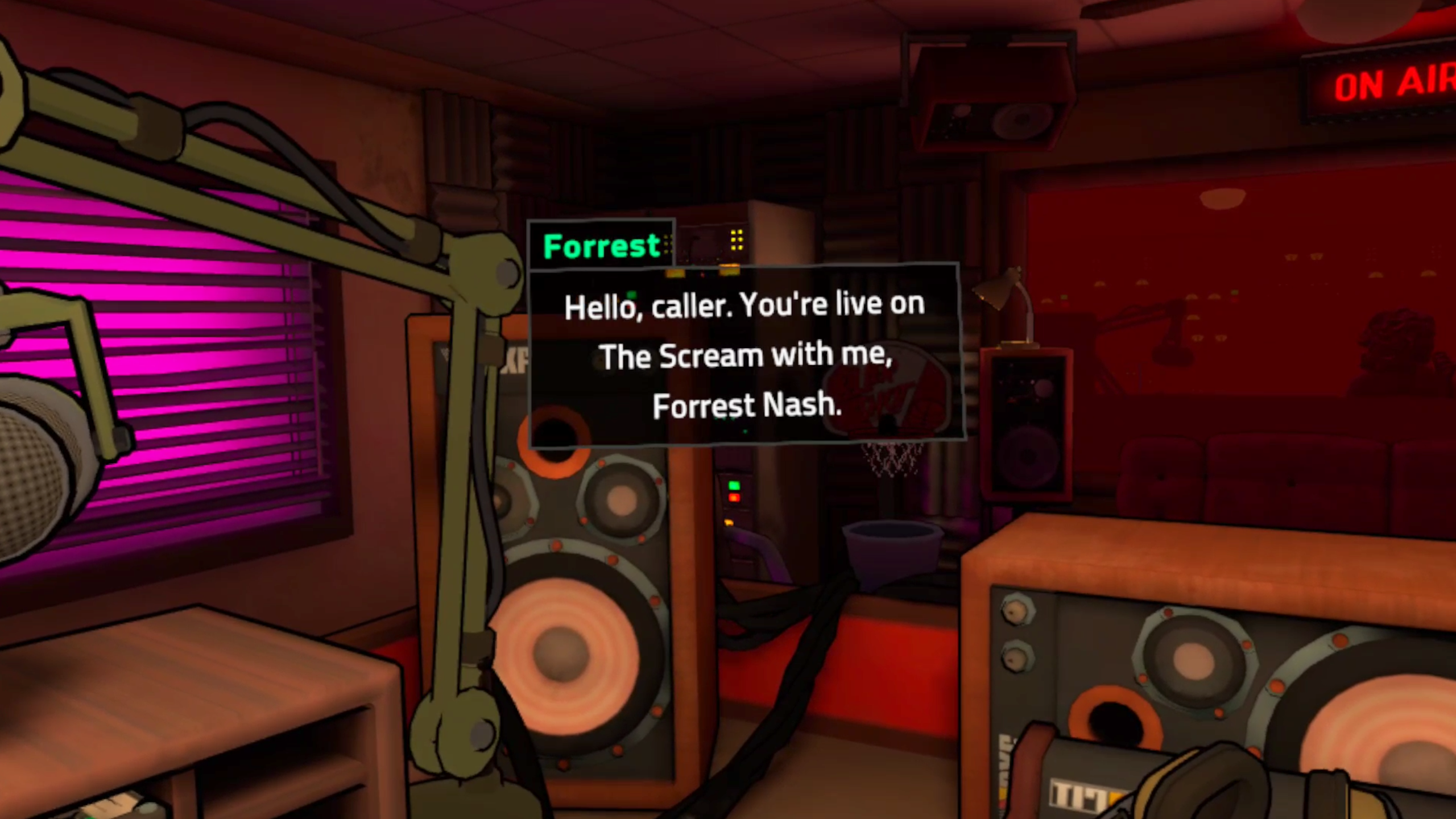
You never know what you’re going to get when the call line starts flashing on your mixing board. Sometimes it’s the proprietor of the local pizza parlor doing his best to get free advertising or the local trust fund baby-turned-conservative-politician hell-bent on “preserving the town’s moral fabric.” Other times it’s a jaded editor at the local paper being chased around his office by the whistling killer or a group of teens that need help stopping the menacing midnight rambler.
Both types of calls offer welcome reprise from each other. Comic relief is cleverly rationed out, but the star of the show here really is the emergency calls. Each one presents a clever puzzle that embellishes Killer Frequency’s immersive tact. Most of the game takes place in a single room, yet through these calls, you get a good sense of what makes the town tick. To warn the killer’s next victim about the incoming threat, you’ll have to learn about the town’s history and geography. One instance, for example, sees you using contextual clues about local festivals and attractions to guide a caller out of a corn maze by searching the KFAM office for a map of the maze and using landmarks within the labyrinth to guide the caller to safety.
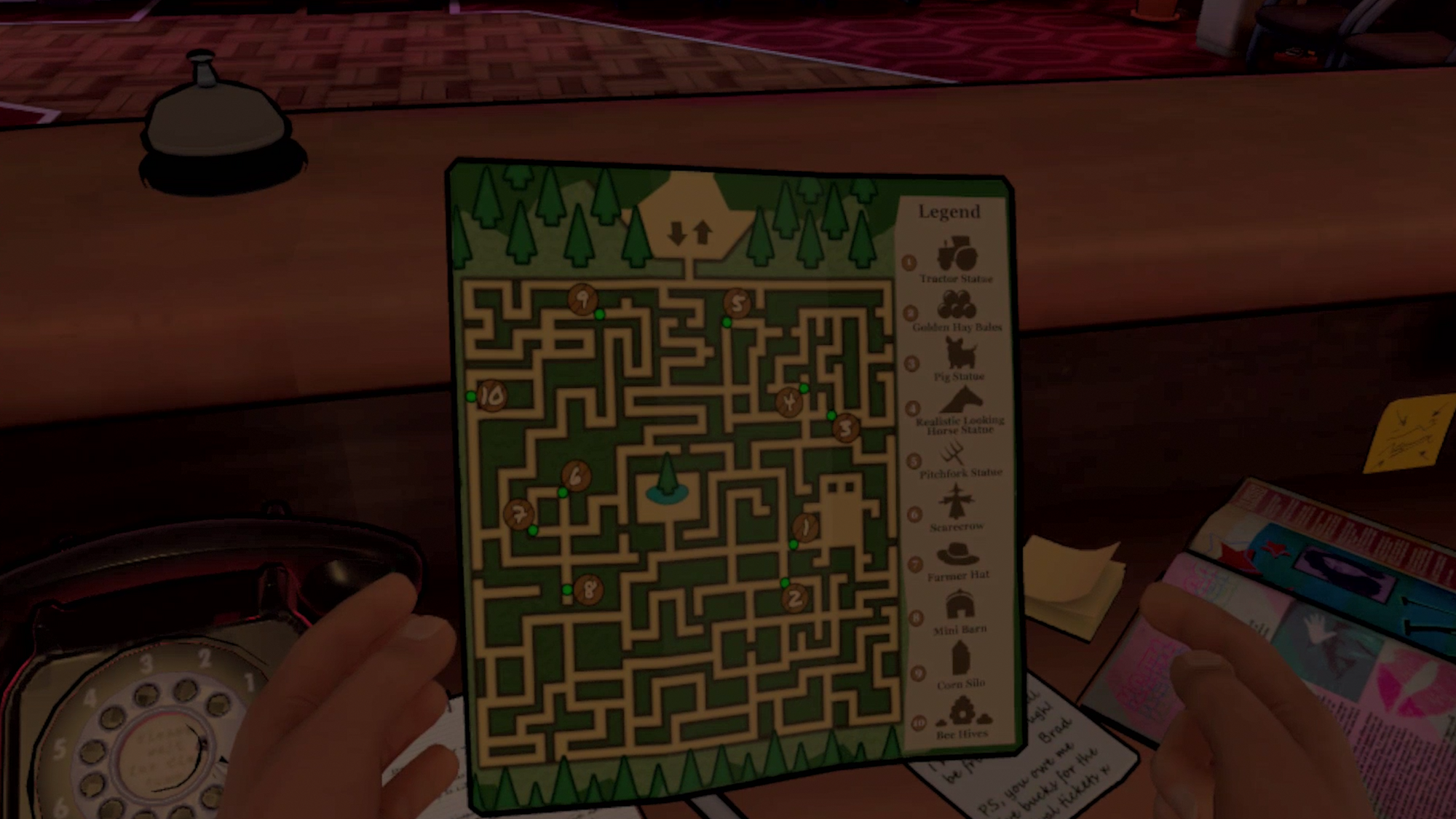
Most of the puzzles follow that structure; a caller is at a specific landmark or building in the city and you need to find a map, newspaper clipping, flyer or other clue that’s hidden somewhere in the office. Someone might fax you the layout of their office space or describe their environment over the phone to give you context clues to deduce where they are. While collecting information tends to vary wildly from puzzle to puzzle, the end-game of each scenario plays out very similarly. Once you have all the information you need, you’ll help the caller by using the information you’ve gathered to determine the best way for them to avoid being butchered.
You’re asked a question or prompted for information and given a few answers to choose from that relate to the clues you’ve obtained. Then, depending on how well you implement that information, you may or may not save a life. Every once in a while, a time-sensitive prompt will pop up, but beyond that, they all function the same.
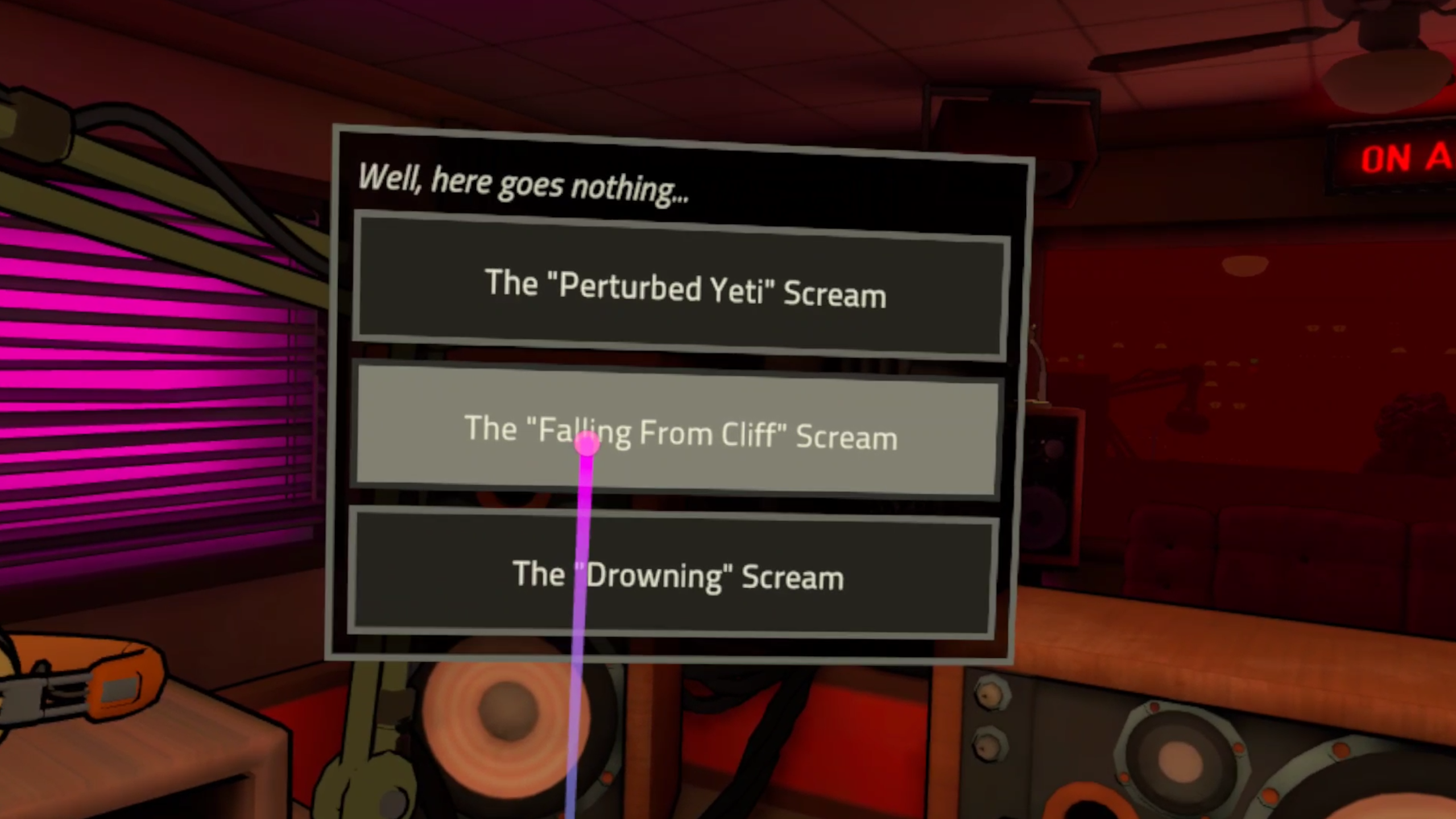
As the story unfolds, you’ll learn more and more about the denizens of Gallows Creek and their relationships – the way you would about any town. Local news and gossip, juvenile traditions at the local high school and other information is all critical to solving the murder puzzles, chronicled through phone conversations and in KFAM’s offices in the form of newspapers, letters, advertisements and town maps.
I really can’t overestimate how skillful Team17’s seamless blend of worldbuilding and character development is, but these environmental clues are more than just clever set-dressing. They also serve as a reason to get you out of your studio and into the creepy office on the other side of your door. While I wish there was a bit more restraint with the sound design in those sequences, they really highlight the abject horror that comes from working in a dark, silent, isolated office space.
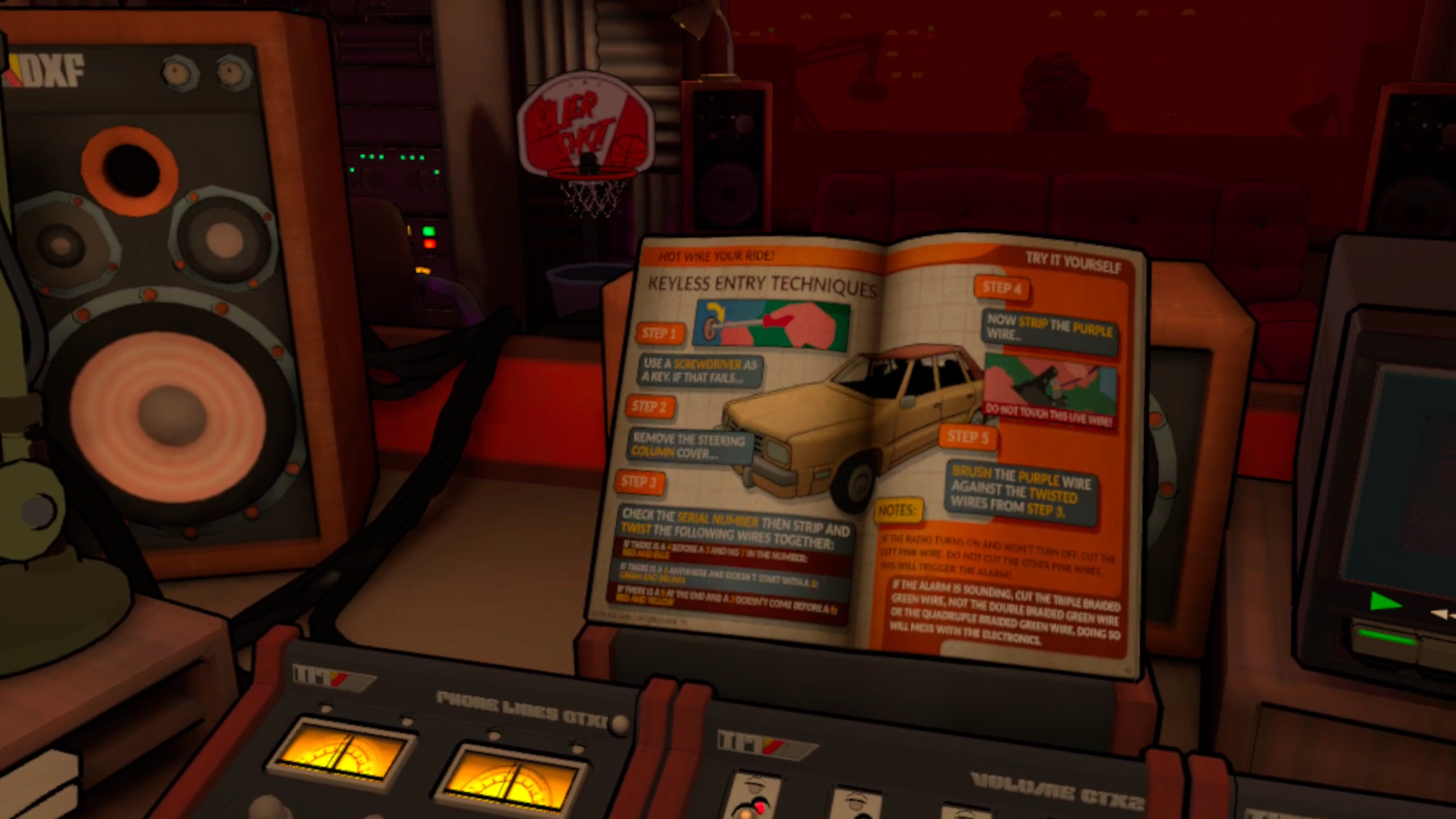
Killer Frequency VR Review Quest 2 - Final Verdict
Killer Frequency is a treat. It’s goofy and schlocky in all the best ways without deflating the thrilling tension in its scariest moments and presents a clever twist on the horror genre that doesn’t lean into some of the frustrating tropes you might find in the average horror game. There were moments that had me sweating enough to fog up my headset just as there were moments that had me laughing out loud. I’m usually not the biggest fan of horror games, especially not VR ones, but Killer Frequency hits just the right notes for me to easily recommend this game to anyone looking for a fright, a chuckle or a clever puzzle.

UploadVR focuses on a label system for reviews, rather than a numeric score. Our reviews fall into one of four categories: Essential, Recommended, Avoid and reviews that we leave unlabeled. You can read more about our review guidelines here.

